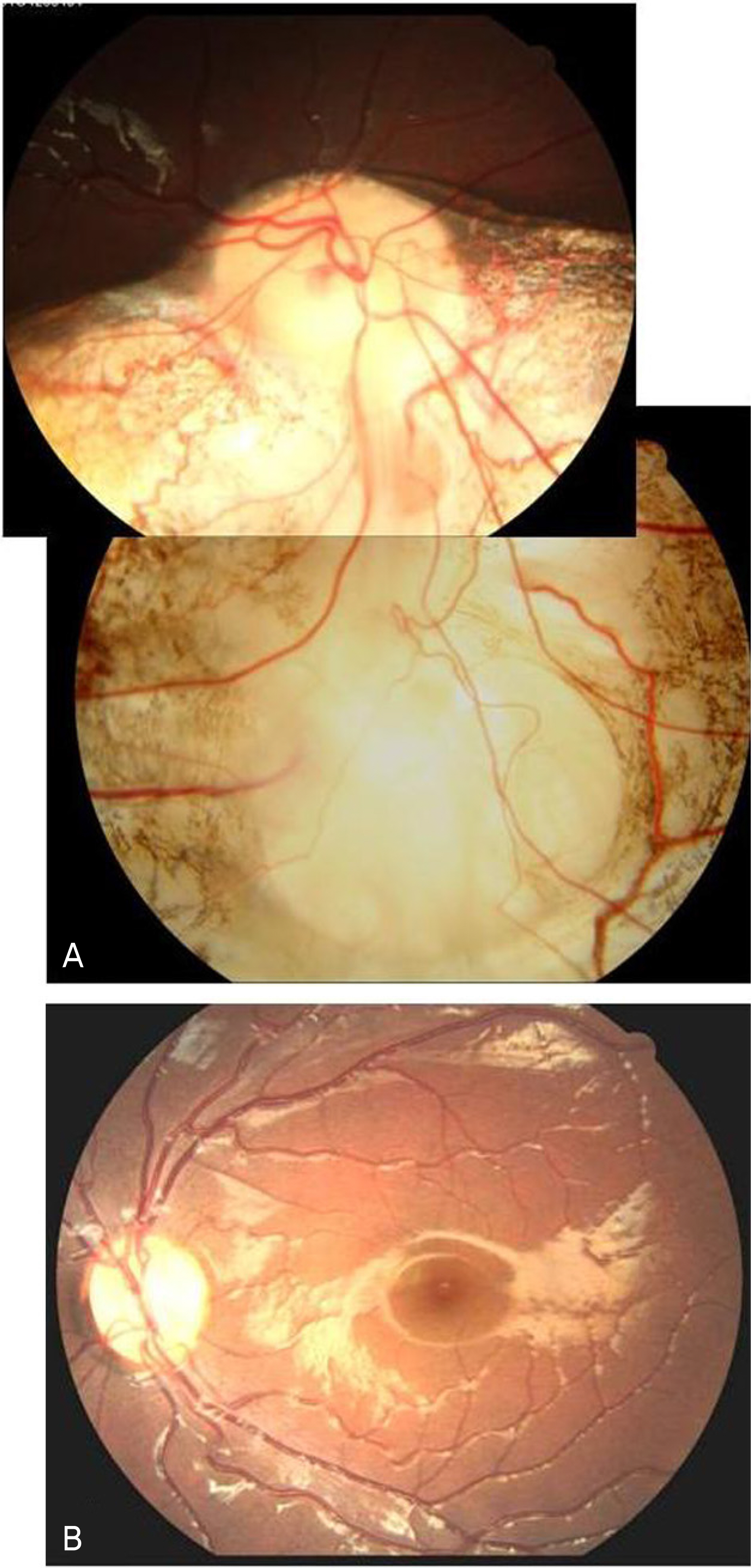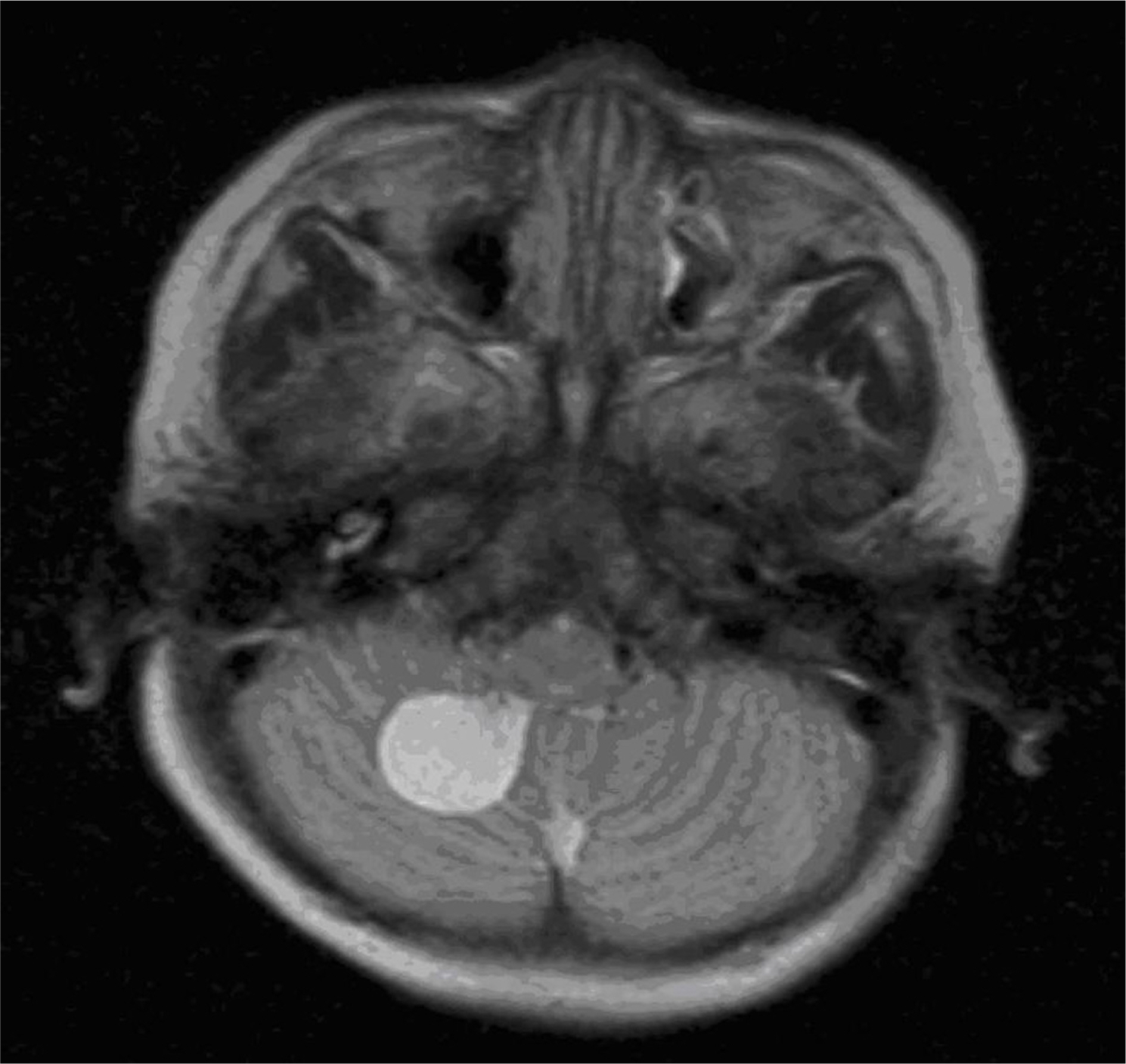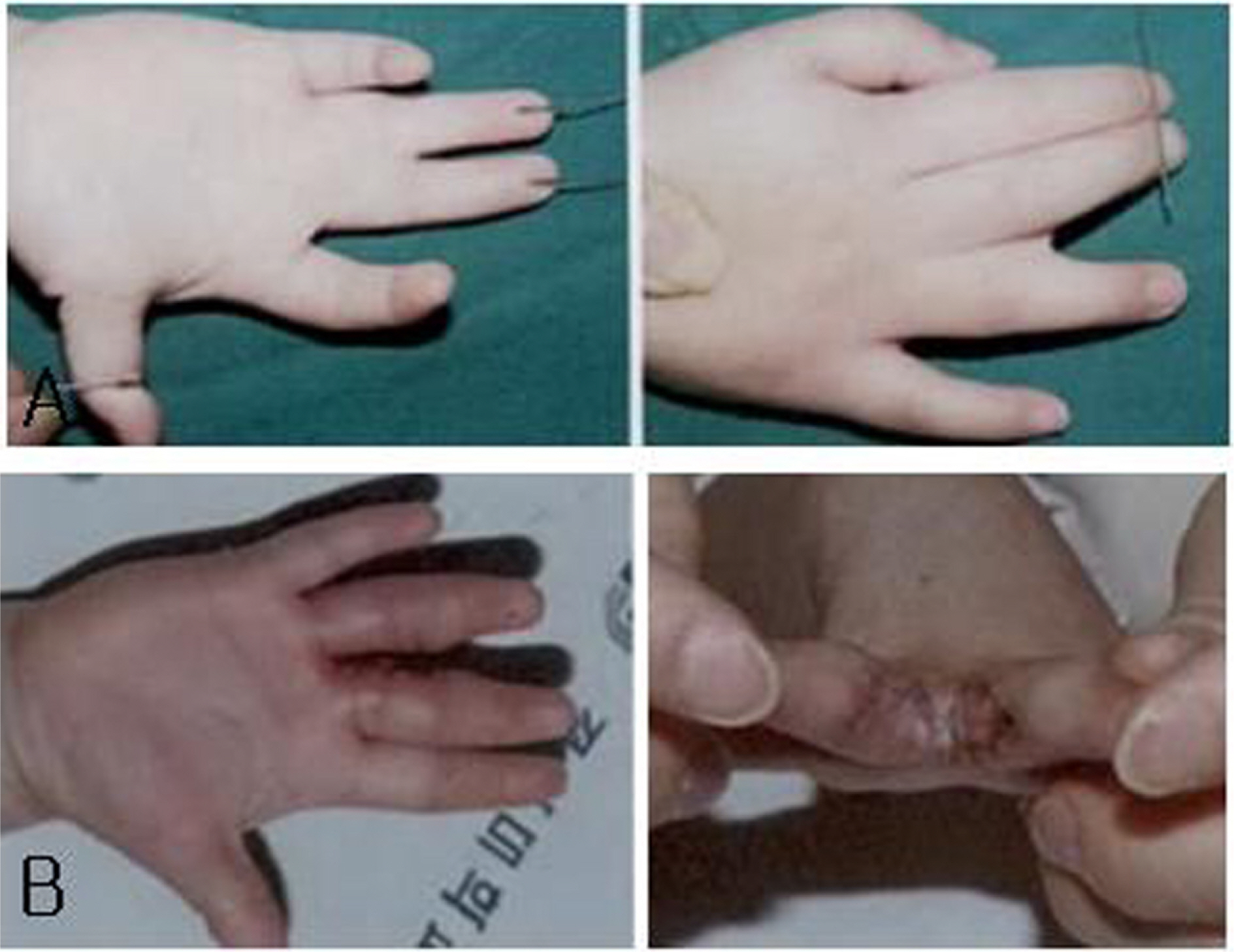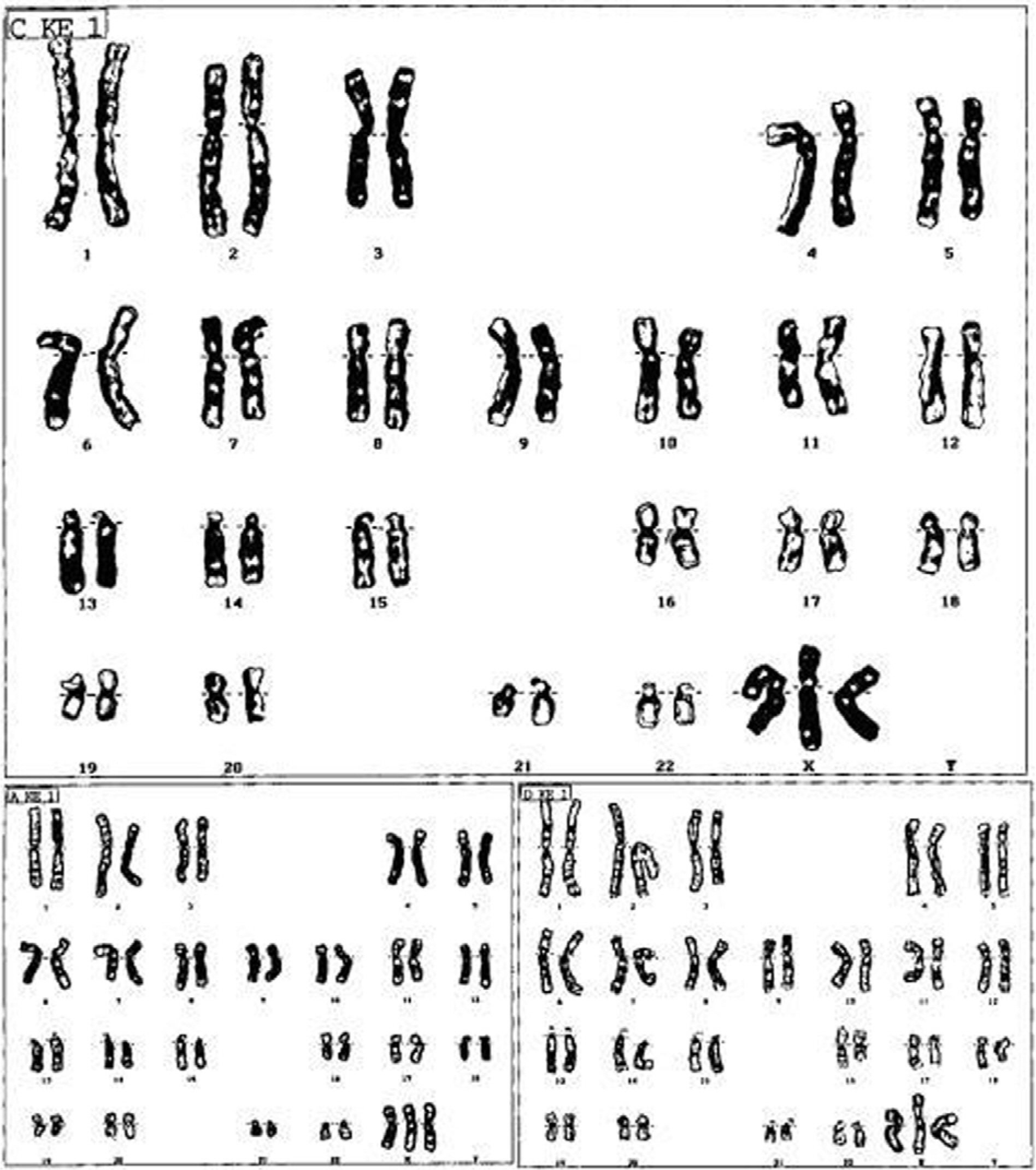J Korean Ophthalmol Soc.
2009 Dec;50(12):1898-1901. 10.3341/jkos.2009.50.12.1898.
A Case of Chorioretinal Coloboma in Triple X Syndrome
- Affiliations
-
- 1Department of Ophthalmology, Gyeong Sang National University, Colleage of Medicine, Jinju, Korea. yjm@gnu.ac.kr
- 2Gyeong Sang Institute of Health Science, Gyeong Sang National University, Jinju, Korea.
- KMID: 2213006
- DOI: http://doi.org/10.3341/jkos.2009.50.12.1898
Abstract
- PURPOSE
To report the case of a child with triple X syndrome presenting with exotropia and chorioretinal coloboma.
CASE SUMMARY
A one-year-old female infant presented with 35PD exotropia in the primary position. The patient had poor fixation of the right eye, and a fundus examination showed chorioretinal coloboma in the inferior region of her right eye. The patient also exhibited syndactyly of the right hand. Brain magnetic resonance imaging revealed a well-defined 2 cm cyst in the right cerebellum. Upon chromosomal study, the patient's karyotype was found to be 47, XXX.
CONCLUSIONS
When infants or children present with ophthalmologic findings such as strabismus and coloboma, systemic conditions and congenital problems should be considered.
Keyword
MeSH Terms
-
Brain
Cerebellum
Child
Chromosomes, Human, X
Coloboma
Exotropia
Eye
Female
Hand
Humans
Infant
Karyotype
Magnetic Resonance Imaging
Sex Chromosome Aberrations
Sex Chromosome Disorders of Sex Development
Strabismus
Syndactyly
Trisomy
Chromosomes, Human, X
Sex Chromosome Aberrations
Sex Chromosome Disorders of Sex Development
Trisomy
Figure
Reference
-
References
1. Duke-Elder S. System of ophthalmology. London: Kimpton;1964. p. 456–87.2. Kim SY, Lee YW, Koo HM, Chung SK. Chromosomal translocation occuring congenital coloboma in both eye. J Korean Ophthalmol Soc. 1992; 33:1233–7.3. Moon AR, Moon NJ, Lee WK. A case of treatment of a retinal detachment associated with choroidal coloboma. J Korean Ophthalmol Soc. 1996; 37:1230–5.4. Myron Y, Ben SF. Ocular pathology. A text and atlas. 2nd ed.Philadelphia: Harper & Row;1982. p. 1424.5. Ginsberg J, Bove K, Nelson R, Englender GS. Ocular pathology of trisomy 18. Ann Ophthalmol. 1971; 3:273–9.6. Jagadeesh S, Jabeen G, Bhat L, et al. Triple X Syndrome with Rare Phenotypic Presentation. Indian J Pediatr. 2008; 6:629–31.
Article7. Castane E, Peris E, Sanchez E. Ocular dysfunction associated with mental handicap. Ophthal Physiol Opt. 1995; 15:489–92.
Article8. Warburg M. Classification of microphthalmos and coloboma. J Med Genet. 1993; 30:664–9.
Article9. Daufenbach DR, Ruttum MS, Pulido JS, Keech RV. Chorioretinal colobomas in a pediatric population. Ophthalmology. 1998; 8:1455–8.10. Vaughan D, Asbury T, Tabbara K. General ophthalmology. 12th ed.Los Angels: Lange Medical Publications;1989. p. 13–4.11. Johnston KM, Nevin NC, Park JM. Cloacal defect in a 23-year-old with 47, XXX karyotype and clinical features of Cat Eye syndrome. Obstet Gynaecol. 2002; 22:696.12. Hero I, Farjah M, Scholtz CL. The prenatal development of the optic fissure in colobomatous microphthalmia. Invest Ophthalmol Vis Sci. 1991; 32:2622–35.13. Sakurai E, Shirai S, Ozeki H, Majima A. A case of nonrhegmato-genous retinal detachment in Dandy-Walker Syndrome. Nippon Ganka Gakkai Zasshi. 1996; 10:832–6.





